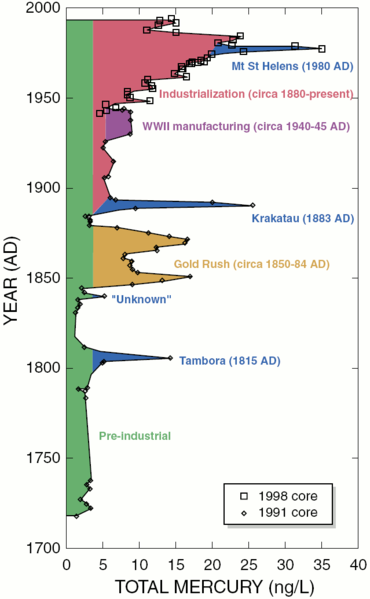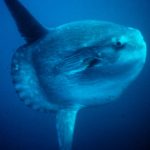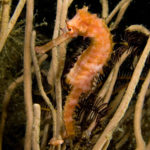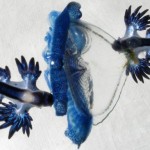
Mercury is distributed across the earth whether it is in the atmosphere, biosphere, or geosphere. In the marine realm, the methylated form of mercury (CH3Hg+) is the form of mercury most easily bioaccumulated. But let’s take a step back and ask how the oceans got mercury in the first place. One source may be from the atmosphere. Fifty percent of atmospheric concentrations originate from volcanic activity and recently, the other fifty percent from anthropogenic sources such as mining activities and manufacturing. Some input may also occur from terrestrial sources such as rivers and groundwater carrying inorganic mercury into coastal regions. Recent work suggests that biomediated methylation of mercury occurs in the oceans by sulfate-reducing bacteria living in low oxygen regions. The study suggests that these bacteria sink to mid-depths, where they decompose and release methylmercury. This biomethylated mercury accounts for as much as 29% of all mercury in subsurface ocean waters of the Pacific. Methylated mercury concentrations are highest below the thermocline and nearly undetectable in surface waters. Findings for another groups largely corroborate this model for the Mediterranean, i.e. not all methylated mercury comes directly from coastal or river sources . But the relative contribution of all these sources, whether the methylated form that enters into the ocean or formed in situ, and many other specifics of the process are either unknown or only recently understood.
A recent study by Choy et. al in PNAS begins to look at these depth related patterns in mercury concentration for bioaccumlation in 9 predatory pelagic fish and 56 species of their prey (cephalopods, fishes, and crustaceans) in the Pacific. After accounting for age and size, both positively correlated with methylmercury concentrations, the researchers can explain 76% of mercury concentrations with depth where both prey and predator species spends most of their time. This deeper depth, 600-1000 meters, corresponds to the low oxygen depths in the Pacific.
These results lend support for both the in situ biomethylation of mercury in the open oceans and that it is enhanced in oxygen poor depths. Choy et. al’s data support recent conclusions that the main source of methylmercury in the open ocean is from the deep water column and not export from coastal regions or the euphotic zone.”
Of course, this also suggests that eating deep-sea fish may also put you at a much greater risk of mercury poisoning. Just one of the many reasons not to eat our deep-sea brethren.

Sunderland, E., Krabbenhoft, D., Moreau, J., Strode, S., & Landing, W. (2009). Mercury sources, distribution, and bioavailability in the North Pacific Ocean: Insights from data and models Global Biogeochemical Cycles, 23 (2) DOI: 10.1029/2008GB003425 (see also Cossa et. al 2009)
Choy, C., Popp, B., Kaneko, J., & Drazen, J. (2009). The influence of depth on mercury levels in pelagic fishes and their prey Proceedings of the National Academy of Sciences DOI: 10.1073/pnas.0900711106






3 Replies to “More Mercury Deeper”
Comments are closed.